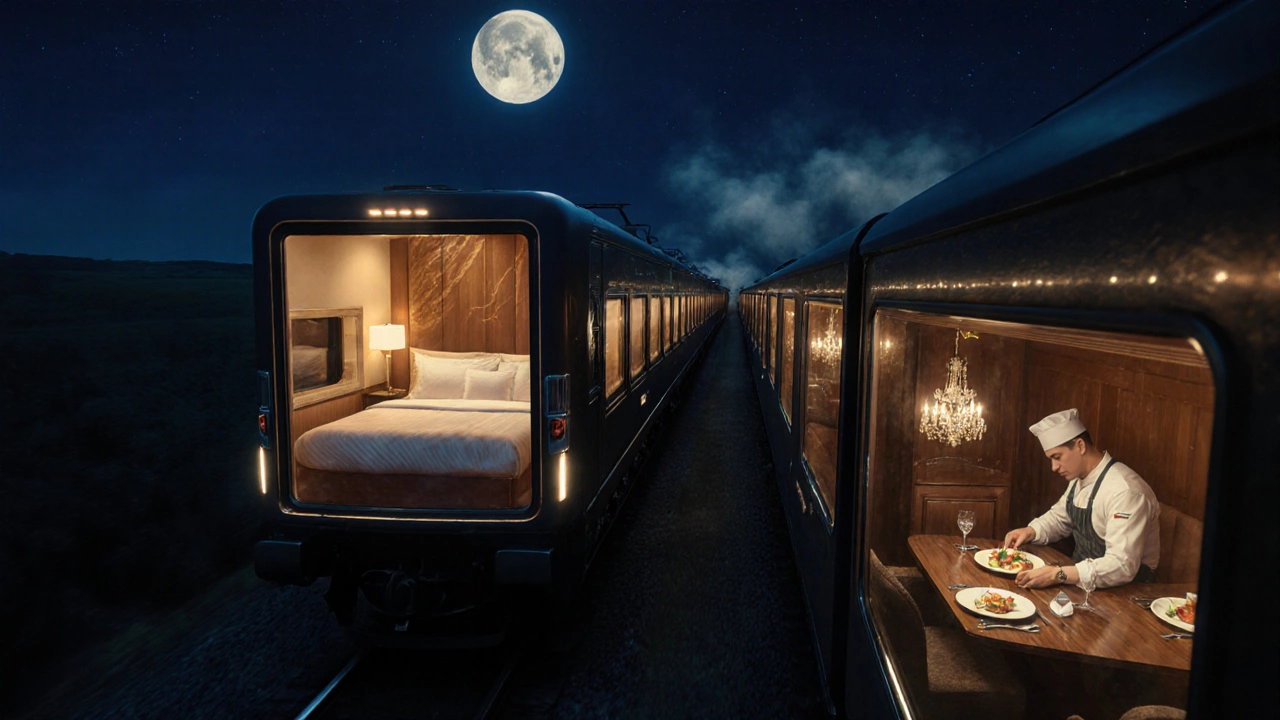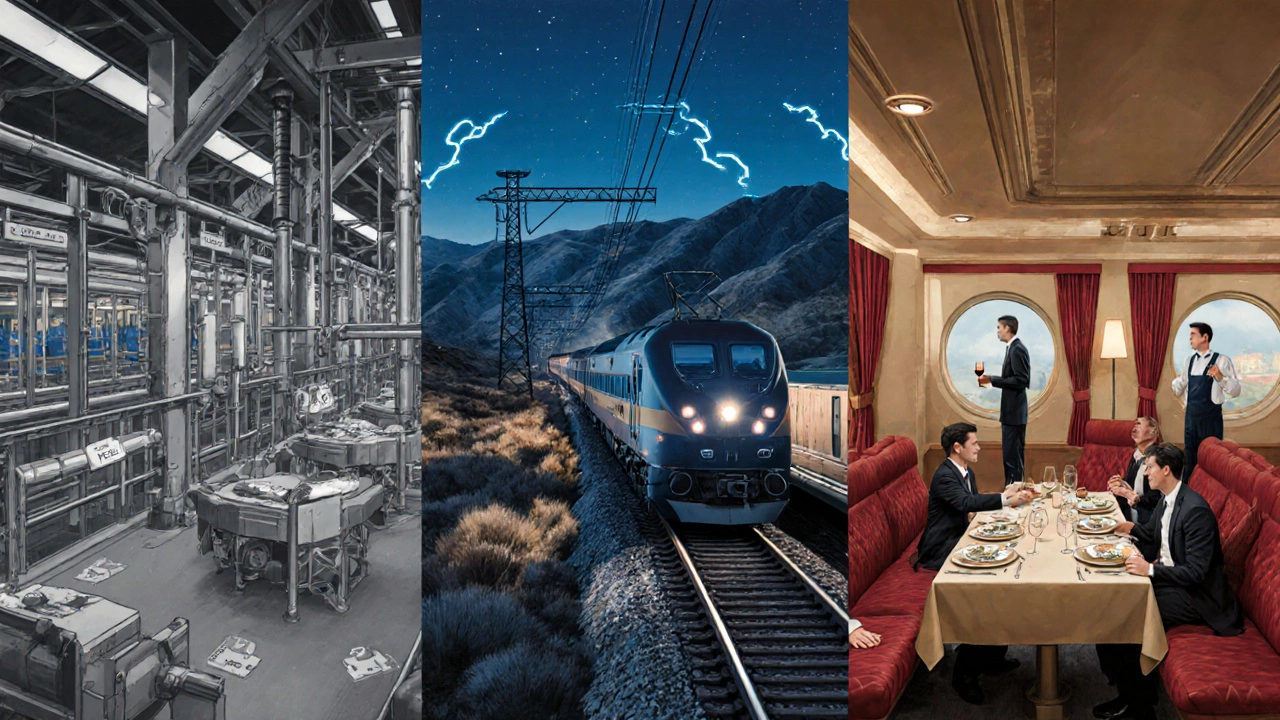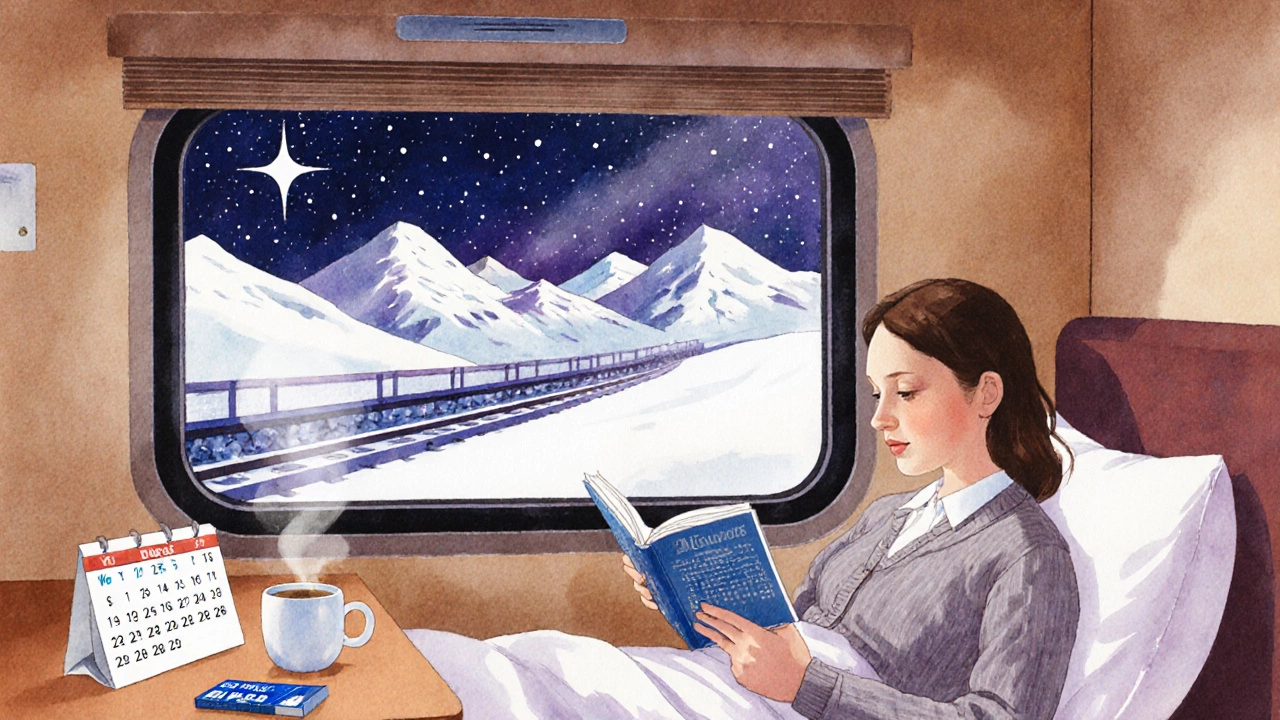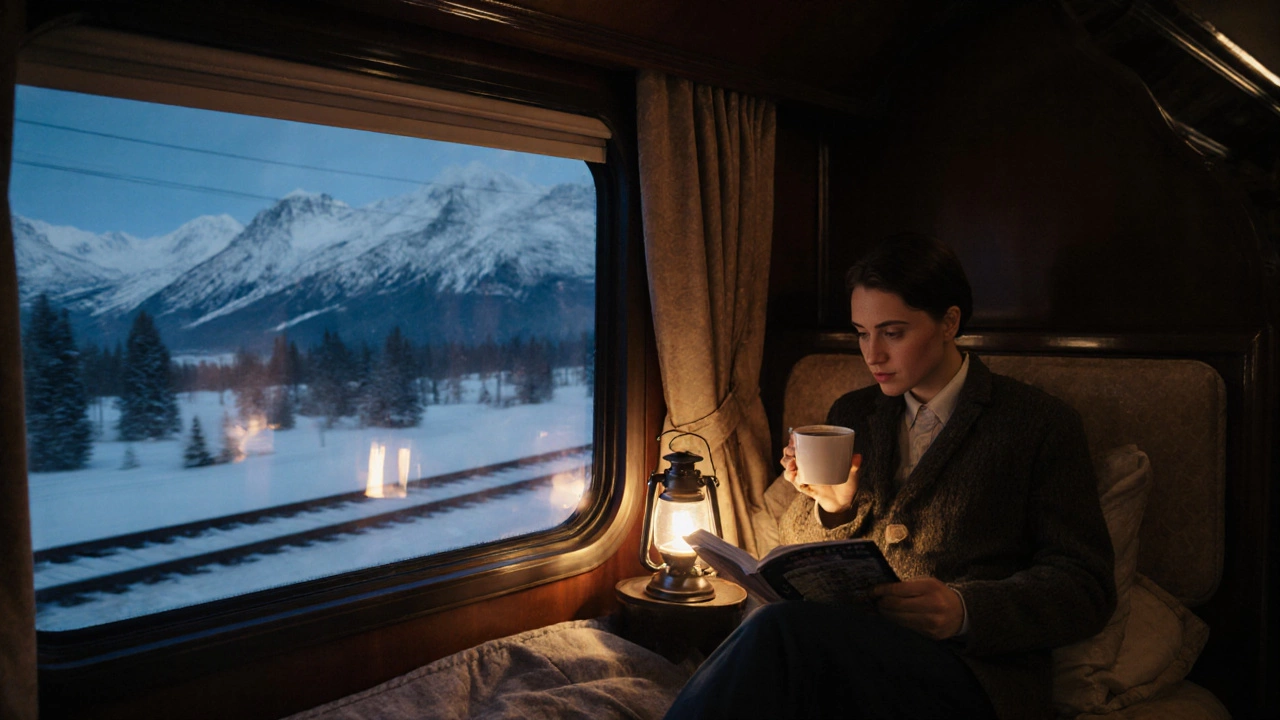Why Sleeper Trains Cost So Much: Hidden Factors Behind High Prices
 Oct, 16 2025
Oct, 16 2025
Sleeper Train Price Calculator
Calculate Your Sleeper Train Cost
Estimate your journey price based on key factors discussed in the article.
How It Works: This calculator uses the factors explained in the article to estimate your sleeper train cost based on train type, cabin class, travel time, season and number of passengers.
Key Cost Factors
Estimated Cost
Ever wonder why a night on a Sleeper Train is often pricier than a short-haul flight? It’s not just the plush bedding or the fine dining - the price tag hides a web of expenses that most travelers never see.
What Makes a Sleeper Train Different?
A sleeper train is a rail service that offers overnight accommodation, typically in private cabins or shared berths. Unlike standard commuter or regional trains, these cars include beds, a washroom, climate control, and often a dining car. The experience is designed to replace a hotel night, turning a long journey into a mobile hotel room.
Luxury Train vs. Regular Night Train
When the term Luxury Train appears, think of iconic services like the Orient Express, the Blue Train, or the Maharajas' Express. They go beyond basic sleeping arrangements - think silk sheets, marble bathrooms, gourmet chefs, and private butlers. Regular night trains, common in Europe and parts of Asia, may only offer a simple bunk with a blanket. The level of service is the first big price divider.
Key Cost Drivers Behind High Prices
- Railway Operating Costs: Running a train costs far more than a bus. Fuel or electricity, track access fees, and signaling payments can eat up a large portion of the budget.
- Rolling Stock Investment: Sleeper cars are specially built with insulation, plumbing, and safety features. The upfront cost of a carriage can be several million dollars.
- Staffing and Service: Conductors, attendants, chefs, and cleaning crews work round the clock. Luxury services may also employ specialized staff like sommeliers.
- Energy Consumption: Heating, cooling, and lighting a cabin for 8-12 hours uses more power than a standard seated coach.
- Maintenance and Refurbishment: High‑end interiors demand regular upkeep. Re‑upholstering, replacing appliances, and ensuring compliance with safety standards add recurring costs.
- Onboard Amenities: A Dining Car with a rotating menu, a lounge bar, and a private Berth for each passenger dramatically increases operating expenses.

How Pricing Models Work
Rail operators use dynamic pricing similar to airlines. Prices surge during holidays, festivals, and peak travel seasons. They also segment the market:
- Standard Berth: Simple bunk with shared facilities - the cheapest night‑train option.
- Cabin Class: Private cabin with a small bathroom, often includes meals.
- Suite or Luxury Class: Full‑size bedroom, ensuite bathroom, premium meals, and sometimes a personal concierge.
The difference between a standard berth and a suite can be the price of a short‑haul flight multiplied by three or four.
Comparing Costs: Sleeper Train vs. Other Transport
| Mode | Typical Price | Average Travel Time | Key Amenities |
|---|---|---|---|
| Sleeper Train (Standard) | $120-$180 | 8-12 hrs | Berth, shared bathroom, basic meals |
| Sleeper Train (Luxury) | $350-$800 | 8-12 hrs | Private cabin, ensuite, gourmet dining, lounge |
| Economy Flight | $150-$250 | 2-3 hrs | Seat, meals on some carriers, baggage |
| Budget Hotel (overnight stay) | $80-$130 | Variable | Private room, private bathroom, breakfast |
| Coach Bus (overnight) | $60-$100 | 10-14 hrs | Reclining seat, shared toilet, limited meals |
The table shows why a luxury sleeper ticket can feel steep - you’re buying not just transport, but a full‑service hotel on rails.

Real‑World Examples That Highlight the Price Gap
The Orient Express is the poster child for luxury rail. A single night in a classic cabin can cost upwards of $1,200, largely because the train runs on private tracks, offers fine‑dining by world‑renowned chefs, and maintains vintage interiors.
The Trans‑Siberian Railway offers a mix of standard and deluxe options. A basic berth on the standard route from Moscow to Vladivostok is around $150, while a deluxe cabin with private bathroom runs $500‑$700.In Europe, the European High‑Speed Rail network introduced night services like the Nightjet. A standard sleeper costs $120, but a “sleeping cabin with en‑suite” jumps to $300, reflecting higher staff‑to‑passenger ratios and more elaborate services.
Why Rail Infrastructure Adds to the Cost
Unlike airlines that pay for airport slots, sleeper trains need exclusive access to long stretches of track that accommodate heavier, longer carriages. Rail Infrastructure fees cover track maintenance, signaling upgrades for night operation, and special platform extensions. The cost per kilometer can be double that of a regular daytime service.

Tips to Keep the Price Manageable
- Book Early: Rail operators often release a limited number of discounted berths 6-12 months ahead.
- Use Rail Passes: European Eurail Passes or Japan Rail Passes include night‑train credits that shave off 30‑40% off the regular fare.
- Travel Off‑Peak: Mid‑week or shoulder‑season journeys avoid the holiday surcharge.
- Upgrade Strategically: Some operators let you upgrade a standard berth to a cabin for a modest fee at the station.
- Consider Mixed‑Mode Trips: Combine a short flight with a sleeper train for the longest leg to balance time and cost.
Bottom Line
Sleeping on a train feels like a hotel on wheels, and the price reflects that reality. From the hefty investment in specialized rolling stock to the premium services onboard, every comfort adds a cost layer. Understanding these factors helps you decide whether the romance of a night under the stars on rails is worth the extra dollars.
Frequently Asked Questions
Why are luxury sleeper trains more expensive than regular night trains?
Luxury sleepers offer private cabins, en‑suite bathrooms, gourmet meals, and higher staff‑to‑guest ratios. All of these amenities increase operating costs, which are passed on to the ticket price.
Can I save money on sleeper train tickets?
Yes. Book early, travel during off‑peak periods, use rail passes, or upgrade a standard berth at the last minute for a lower fee than buying a full‑price cabin.
How does the cost of a sleeper train compare to an overnight flight?
A standard sleeper berth often costs a bit more than a low‑cost overnight flight, but a luxury cabin can be two‑to‑three times higher. The trade‑off is a hotel‑like experience and scenic views.
Do all countries offer sleeper train services?
Most major rail networks in Europe, Russia, China, and India have sleeper options. In the U.S., overnight services are limited, though Amtrak’s Auto Train and a few regional night services exist.
What should I look for when choosing a sleeper train?
Check the cabin type (berth vs. private cabin), included meals, bathroom facilities, and whether Wi‑Fi or power outlets are provided. Reviews often reveal hidden comfort or service gaps.